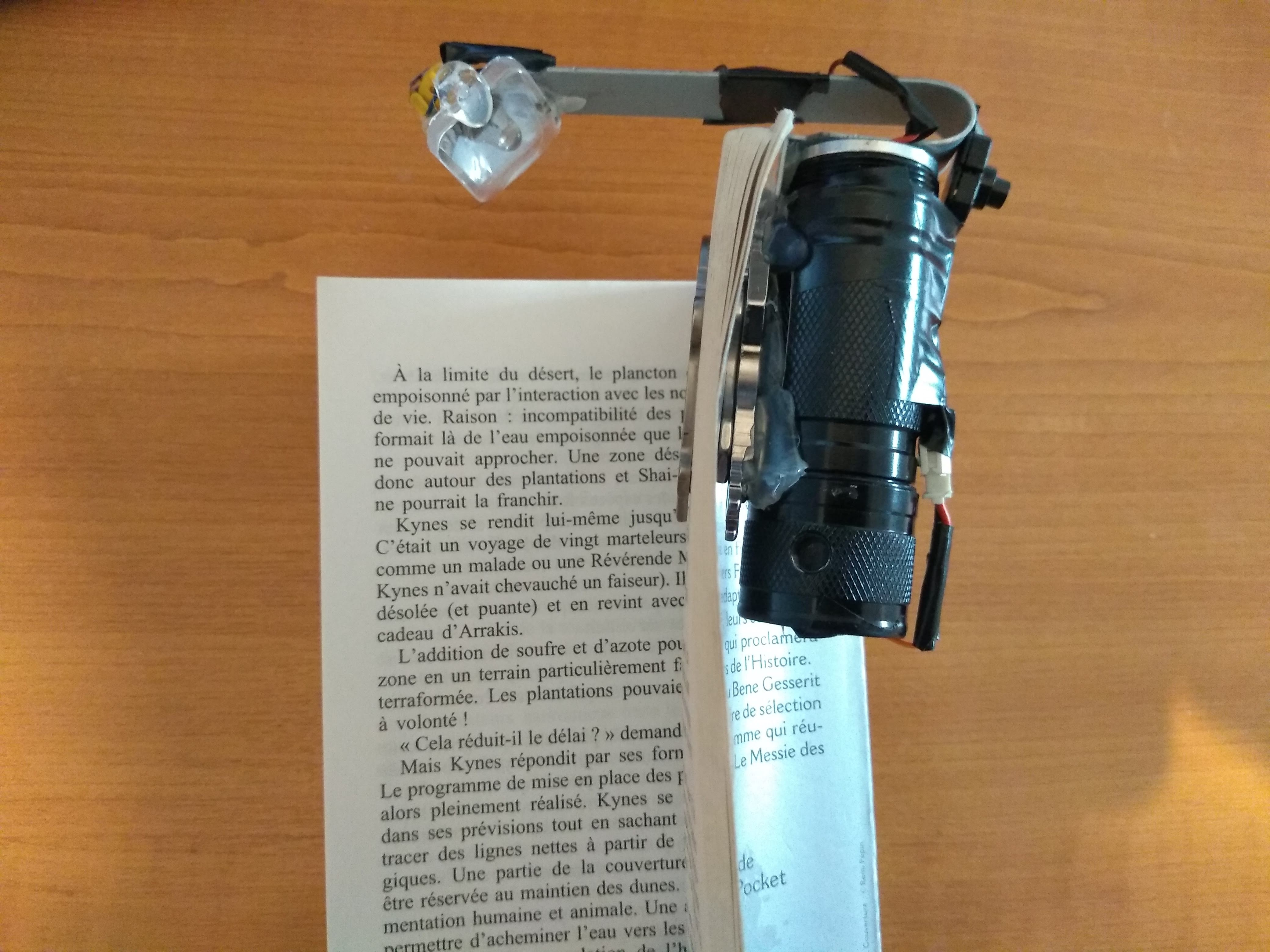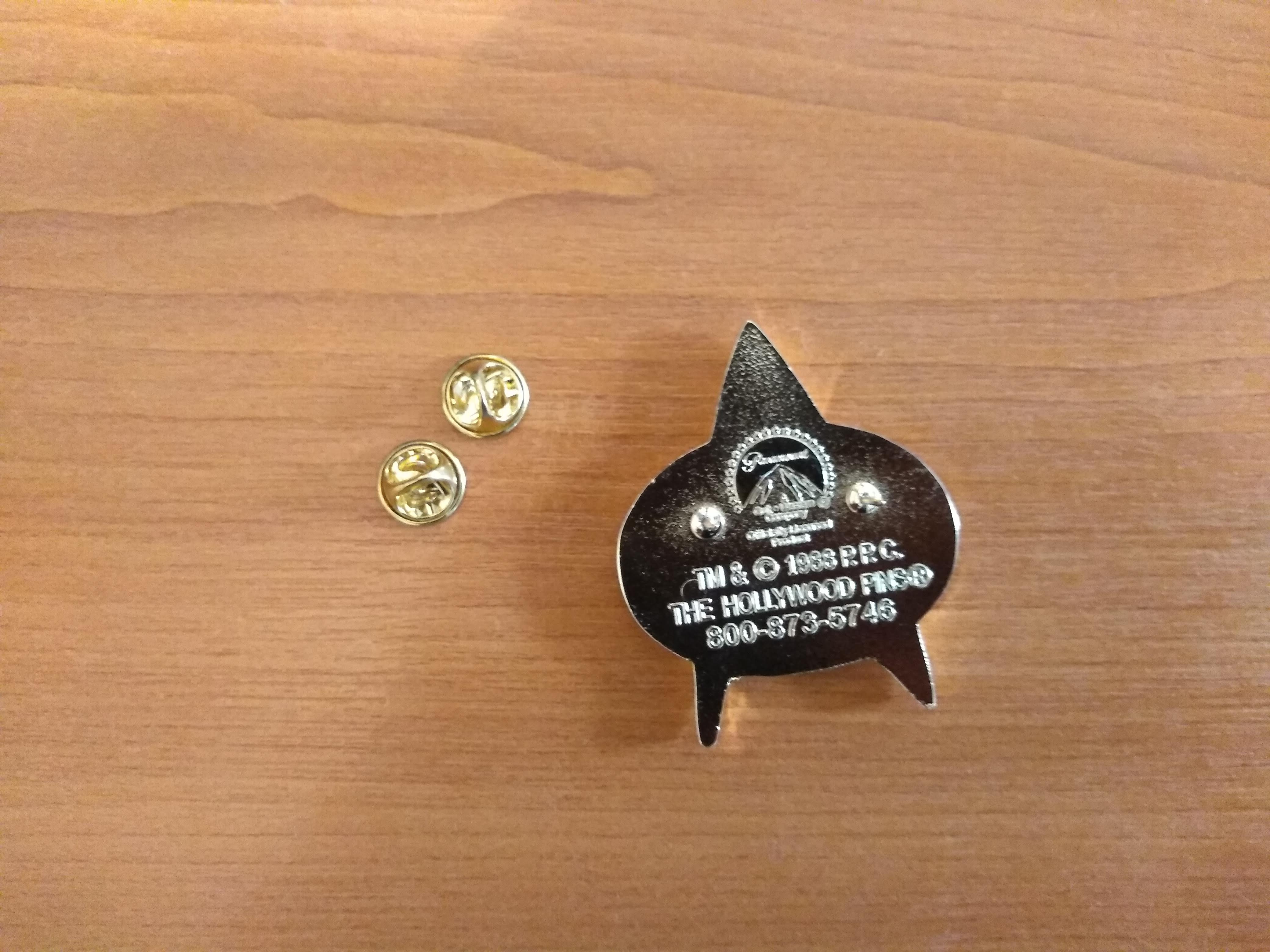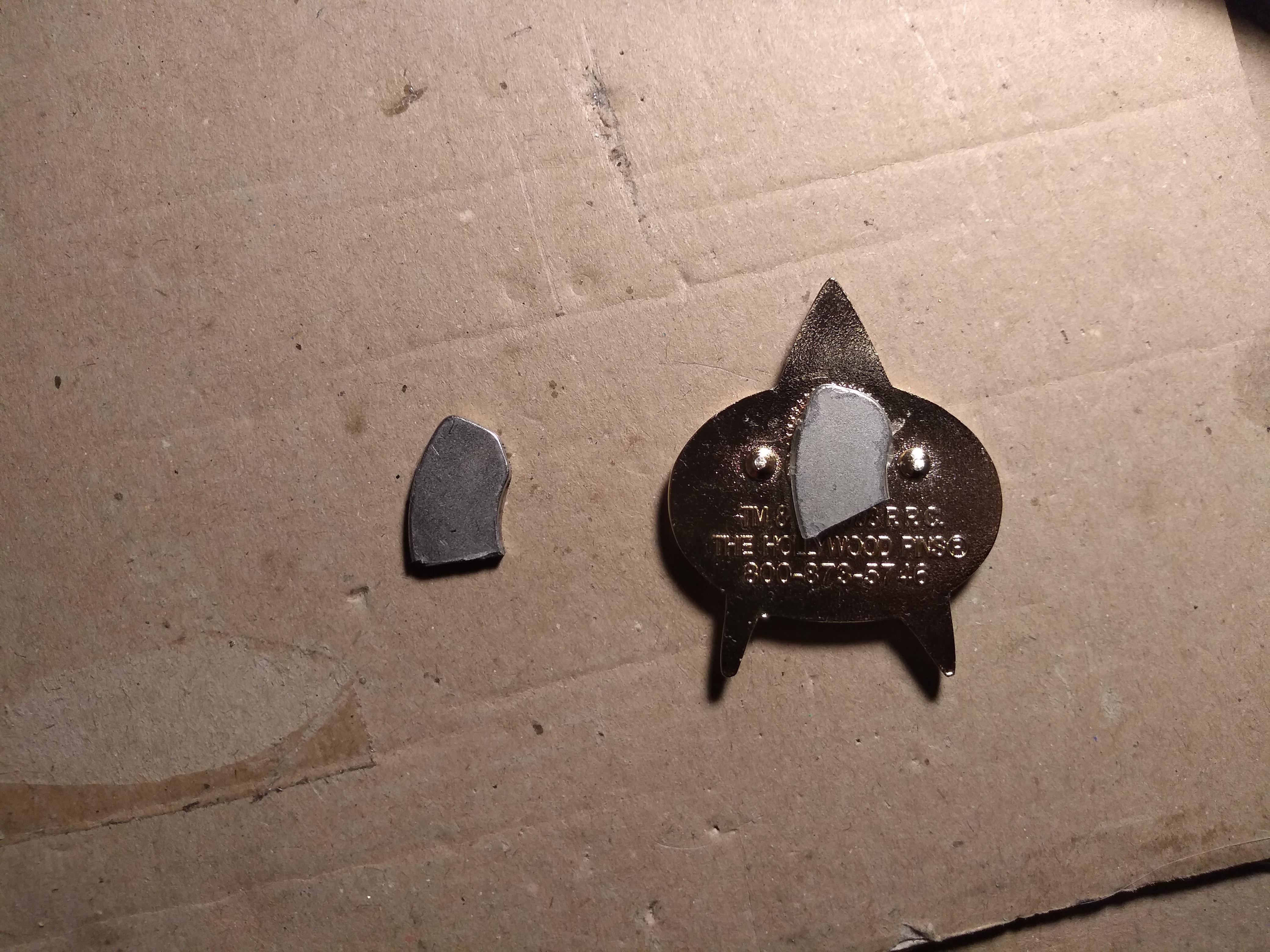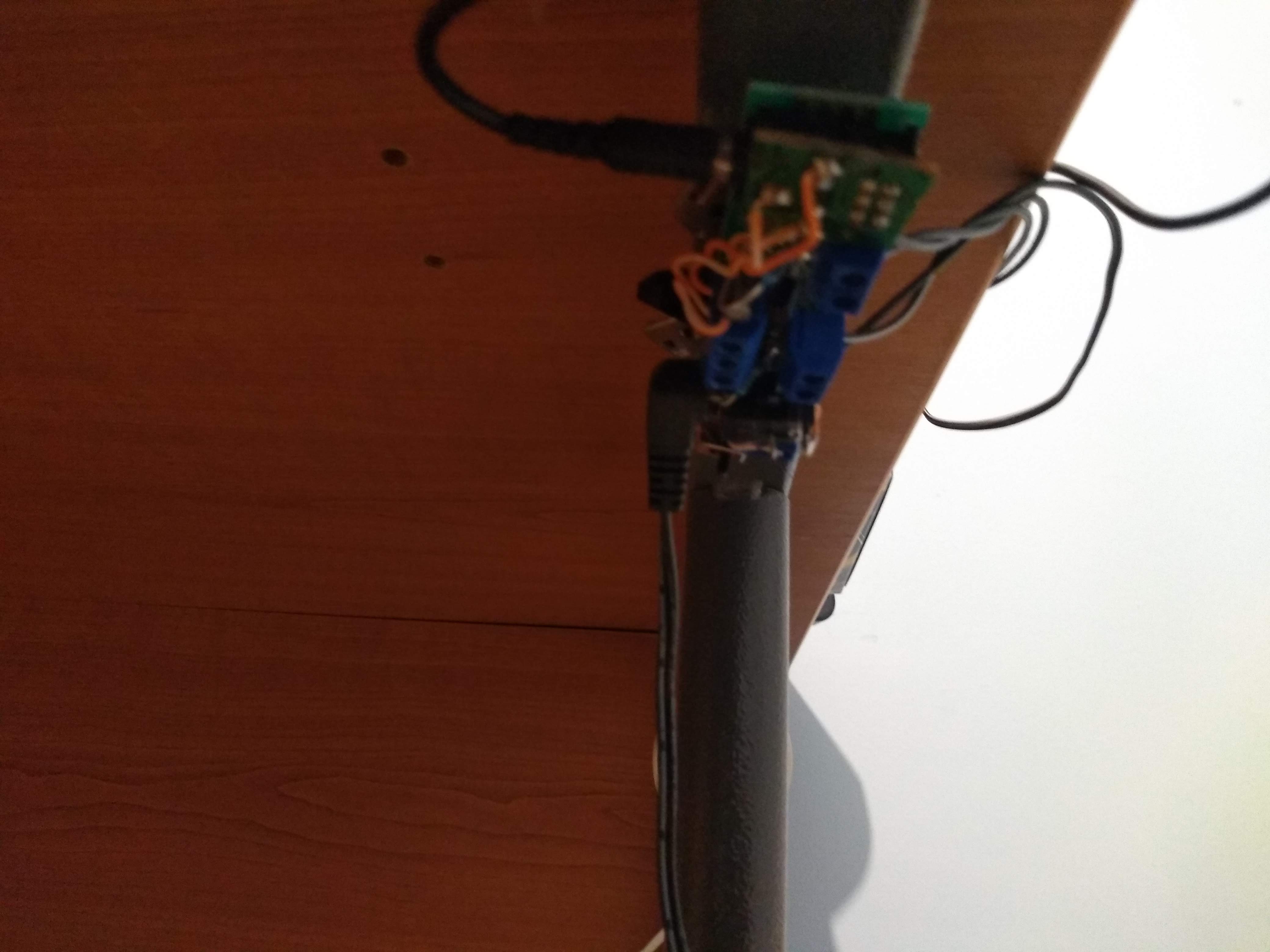Finding uses for neodymium magnets
2019-09-04
I was decommissioning a few of my older computers and servers, stripping them down for parts. The hard drives in them were mostly IDE drives which had long stopped working. There are almost no useful parts you can strip from a non-functional hard drive except maybe the IDE connector and of course, the extremely strong rare-earth magnets.
But what could I do with them? Here are some things I did and photographed:
- Book light that holds on with magnets
- Converting a Star Trek combadge from using pins to magnets
- Sticking an amplifier to the bottom of my desk
Book light
I read a lot of books, not all of them during the day. An easy solution for reading books in bed is to have a lamp, but sometimes you want a more portable solution. Who am I kidding, this is just a flimsy excuse to use some magnets.
I got the battery pack from a small torch, a PCI card filler from a Sun workstation, and a light from a torch built into a radio I got from the Science Museum in London 15 years ago. After a few generous applications of hot glue and solder, this is what I ended up with:

In that picture, it's attached to a book using two magnets. One glued to the light itself and the other inside the book. The idea is that once you get past halfway in the book, you switch the side the light is on. And there's no need to worry about the light falling out, the magnets can lift several kilos.
Here's one of me reading Dune:

Converting a combadge
Here's the product I have at the moment:

I got it at Destination Star Trek in Birmingham a couple of years ago. It's a good badge, but you have to actually poke holes in your shirt to wear it. This is suboptimal. An improvement would be to have one magnet glued to the badge and one you put inside your shirt.
I cut the pins and filed the stumps down, applied some hot glue and the magnet and voila! A magnetic combadge!

You may wonder why I used hot glue instead of something else, like superglue. The answer is that hot glue is very forgiving and not too strong: you can easily remove it with a heat gun and some pliers.
Below-desk amplifier
Recently I've been trying to design and build some amplifiers for various speakers. I have a class B amplifier in the works, but all of the amplifiers I have managed to bias correctly and so on are class A.
Currently, I'm using a class A common emitter amplifier with some 4 ohm speakers I found. A problem I had is that I kept knocking it off my desk, I needed to either stick it down or put it under my desk. Using magnets, I managed to do both:

If you're interested, each speaker is driven by a 2N2222 transistor, with just a base-collector bias resistor (not a very good or complex design, I know, I know) and a 5 ohm 5 watt power resistor in series with the speaker so we don't exceed the current limits of the transistor. I did that once and my transistors let out their magic smoke, I decided it was better to live with inefficiency than have nothing at all. Some bigger transistors are coming in the post though.
I'm looking to design some more complex amplifiers and use them with random speakers from eBay - some huge speakers go for very cheap with no bids, it's very bizarre. Stay tuned. Or maybe watch the local news for an article about a man killed by overpressure from dodgy speakers.
Other magnet fun
I've also repaired fridge magnets, made a screw holder, magnetised some screwdrivers and more! But most of those applications are too mundane to write a blog post about.
